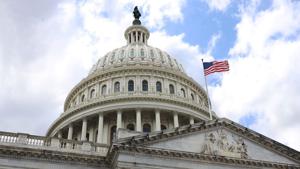The debt ceiling deal, struck between the Biden administration and Republicans in Congress only days before the June 5, 2023, default deadline, will provide $121 billion in veteran medical funding for fiscal 2024. The deal also includes $20 billion in compensation funding for American troops impacted by exposure to the military’s toxic burn pit sites in Iraq and other places. The money is much needed as veterans are disproportionately impacted by certain medical conditions as well as economic pressures.
As a group, former service men and women are at greater risk of mental health disorders, substance abuse problems, homelessness, and suicide than civilians of the same age group who are not veterans. This is no coincidence, as life in the military can take a profound mental and physical toll, particularly on those exposed to combat.
There are 16.5 million military veterans living in the United States today, down from 26.4 million in 2000. The decline is primarily attributable to the aging of the generations that enlisted during some of the country’s largest military mobilizations, namely, Vietnam and World War II. (These are the states with the most living WWII veterans.)
Nationwide, military veterans constitute 6.4% of the civilian adult population, though the share of veterans varies considerably from state to state.
In Mississippi, 6.9% of the civilian population 18 and older have served in the military, the 22nd smallest share among the 50 states.
Of the 155,272 veterans living in Mississippi, the largest share — 29.6% — served in the Vietnam era, a conflict that saw 2.2 million Americans conscripted into service. Additionally, 16.2% of veterans in the state enlisted in September 2001 or later, and only 0.6% of living veterans served in the World War II era.
All data in this story is from the U.S. Census Bureau’s 2021 American Community Survey.
| Rank | State | Veterans as a share of civilian adult population | Total veteran population | Veterans who served in WWII era only (%) | Veterans who served in Vietnam era only (%) | Veterans who enlisted in Sept. 2001 or later (%) |
|---|---|---|---|---|---|---|
| 1 | Alaska | 11.0% | 58,431 | 0.3 | 27.1 | 24.0 |
| 2 | Virginia | 9.7% | 641,144 | 0.6 | 23.4 | 19.0 |
| 3 | Montana | 9.4% | 80,953 | 0.4 | 33.4 | 17.9 |
| 4 | Wyoming | 9.2% | 40,910 | 0.7 | 39.2 | 13.2 |
| 5 | Maine | 8.8% | 98,703 | 0.8 | 33.8 | 12.7 |
| 6 | South Carolina | 8.7% | 353,056 | 0.4 | 32.6 | 16.2 |
| 7 | Idaho | 8.6% | 122,331 | 0.6 | 31.3 | 20.0 |
| 8 | Washington | 8.2% | 490,717 | 0.9 | 29.8 | 17.8 |
| 9 | South Dakota | 8.1% | 54,403 | 0.3 | 34.3 | 15.5 |
| 10 | Alabama | 8.1% | 315,142 | 0.6 | 29.5 | 15.1 |
| 11 | Arizona | 8.1% | 454,375 | 0.8 | 33.4 | 17.5 |
| 12 | Hawaii | 8.0% | 87,357 | 1.0 | 31.7 | 21.8 |
| 13 | Oklahoma | 8.0% | 240,146 | 0.6 | 31.8 | 17.9 |
| 14 | Nevada | 7.9% | 193,340 | 0.8 | 32.4 | 17.4 |
| 15 | New Mexico | 7.9% | 128,924 | 0.9 | 33.0 | 13.1 |
| 16 | Florida | 7.8% | 1,356,882 | 1.3 | 31.7 | 13.7 |
| 17 | New Hampshire | 7.8% | 87,604 | 0.4 | 31.7 | 13.3 |
| 18 | Colorado | 7.7% | 348,485 | 0.7 | 29.7 | 19.9 |
| 19 | Oregon | 7.7% | 259,207 | 1.0 | 36.2 | 14.8 |
| 20 | Arkansas | 7.7% | 177,176 | 0.7 | 34.0 | 16.7 |
| 21 | North Carolina | 7.6% | 615,452 | 0.8 | 29.6 | 17.2 |
| 22 | West Virginia | 7.6% | 107,271 | 0.6 | 36.8 | 13.3 |
| 23 | Missouri | 7.5% | 355,424 | 1.1 | 36.2 | 13.4 |
| 24 | Nebraska | 7.4% | 109,225 | 0.6 | 31.1 | 15.8 |
| 25 | Tennessee | 7.3% | 394,604 | 0.6 | 32.4 | 16.6 |
| 26 | Georgia | 7.3% | 595,743 | 0.6 | 26.9 | 18.7 |
| 27 | Delaware | 7.0% | 55,516 | 1.0 | 38.7 | 15.9 |
| 28 | Maryland | 7.0% | 332,591 | 0.8 | 26.2 | 19.0 |
| 29 | Mississippi | 6.9% | 155,272 | 0.6 | 29.6 | 16.2 |
| 30 | North Dakota | 6.9% | 40,250 | 0.5 | 29.7 | 20.7 |
| 31 | Kentucky | 6.8% | 237,597 | 1.0 | 32.1 | 15.1 |
| 32 | Ohio | 6.8% | 621,890 | 1.1 | 34.4 | 14.2 |
| 33 | Kansas | 6.7% | 147,721 | 1.1 | 33.7 | 16.4 |
| 34 | Iowa | 6.6% | 162,358 | 1.7 | 35.9 | 14.5 |
| 35 | Wisconsin | 6.6% | 303,641 | 1.0 | 35.2 | 13.5 |
| 36 | Indiana | 6.4% | 335,248 | 1.0 | 33.5 | 14.3 |
| 37 | Texas | 6.4% | 1,408,464 | 0.6 | 27.2 | 21.7 |
| 38 | Louisiana | 6.3% | 221,316 | 0.9 | 31.2 | 15.6 |
| 39 | Pennsylvania | 6.2% | 641,525 | 1.4 | 35.9 | 13.1 |
| 40 | Vermont | 6.1% | 31,971 | 1.5 | 36.7 | 12.3 |
| 41 | Minnesota | 6.1% | 265,920 | 1.4 | 36.7 | 13.8 |
| 42 | Michigan | 6.0% | 474,645 | 1.1 | 36.3 | 13.5 |
| 43 | Rhode Island | 5.6% | 49,206 | 2.6 | 33.8 | 14.6 |
| 44 | Illinois | 5.0% | 496,352 | 1.3 | 35.1 | 14.6 |
| 45 | Connecticut | 4.9% | 140,684 | 2.0 | 35.2 | 13.8 |
| 46 | Utah | 4.8% | 114,803 | 1.1 | 29.5 | 18.2 |
| 47 | California | 4.4% | 1,342,337 | 1.2 | 32.6 | 17.9 |
| 48 | Massachusetts | 4.2% | 238,039 | 2.3 | 35.8 | 12.4 |
| 49 | New Jersey | 3.9% | 283,485 | 1.7 | 34.4 | 13.7 |
| 50 | New York | 3.9% | 614,289 | 1.5 | 34.1 | 13.5 |
















































